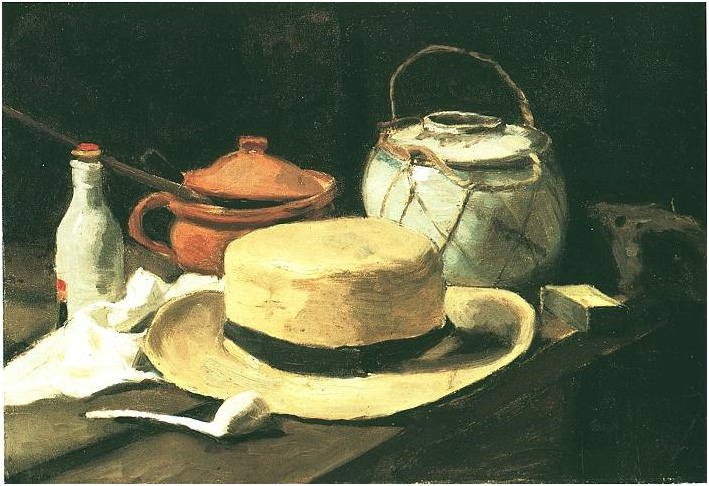Line direction is important in communicating a sense of potential or kinetic energy (rest or motion). Horizontal and vertical lines usually convey rest, as they are more stable and associated with actions like standing or laying down. On the other hand, diagonal lines are more closely associated with motion. Activities like running and skiing are done at a diagonal and therefore are understood as more dynamic.

In this still life, most of the lines are horizontal with emphasis on the hat in the center. There are vertical lines as well, further contributing to the at rest feeling of the painting. A calm, stable atmosphere is expressed through the lack of dynamic lines and sufficiency of resting lines.